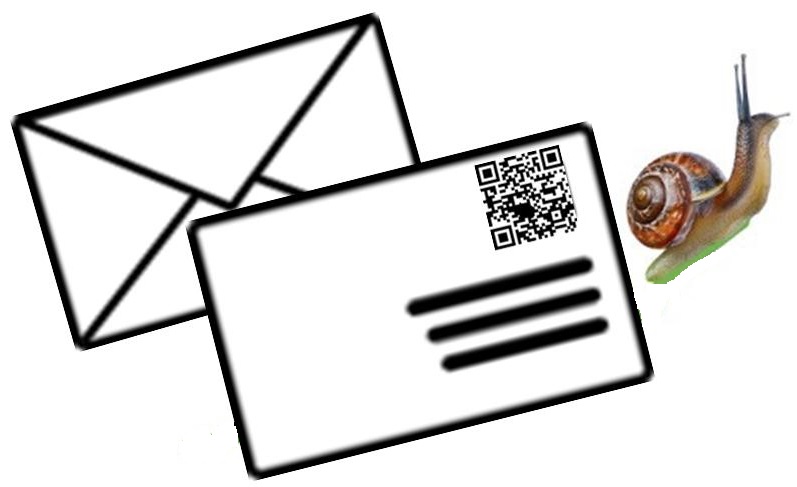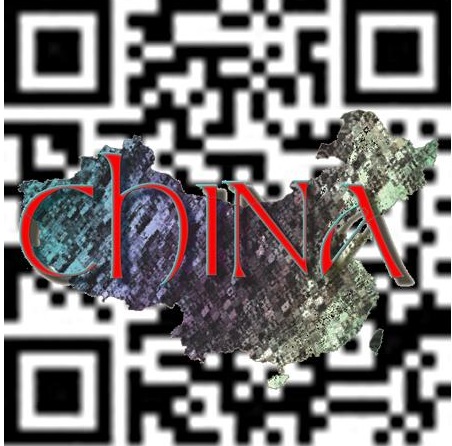These quick response codes allow senders to attach video content to their letters and parcels.
Hrvatska Pošta, the Croatian mail system has already been using QR codes on stamps in order to allow the postal service in the country to be able to track the location of the mail that it is responsible for sending.
Now, Australia Post has also added these barcodes to its services, but in an entirely new way.
Where Hrvatska Pošta is using QR codes for internal functions that help them to better serve their customers, Australia Post is providing mail senders with an entirely new service. With these barcodes, customers in Australia can link them to video messages that they have recorded and then send them as stamps on physical envelopes that can be scanned by the recipient and viewed on their smartphones or tablets.
These postage stamps with QR codes are special editions and each have their own unique barcodes.
 The quick response codes are printed on the envelopes for free for customers that are sending their mail through the Express Post or Express Courier International Service from the postal service. The service comes with an instruction card that signals to the recipient that this is more than just a standard barcode. It encourages them to download the Video Stamp app, for free, from the Apple App Store and from Google Play.
The quick response codes are printed on the envelopes for free for customers that are sending their mail through the Express Post or Express Courier International Service from the postal service. The service comes with an instruction card that signals to the recipient that this is more than just a standard barcode. It encourages them to download the Video Stamp app, for free, from the Apple App Store and from Google Play.
Those cards are attached to the packages and letters and can be peeled off by the recipient so that the directions can be followed. From the time that the letter is sent, the sender has 12 hours in which to record their video message so that it will be possible for the recipient to view the message upon receipt.
This unique use of the QR codes gives Australia Post the opportunity to bring their traditional type of shipping into the present by linking physical mail with the digital environment. This service has been released just in time for Christmas – the busiest time of the mail sending year – allowing consumers to be able to send their video messages to recipients along with cards and gifts.
The restaurant verification system in the country has now broadened its reach for helping consumers.
Following a successful pilot program in the Hiadian district in Beijing, China, the use of QR codes to help restaurant patrons to be able to check into the food safety information linked to an establishment.
The district has 7,533 restaurants that have already started to take part in the program.
Each of these restaurants has publicized their food safety information online and has now linked that data to unique QR codes that can be scanned by patrons with smartphones in order to be able to review the information and decide whether or not they would like to eat there. The barcodes need to be scanned using a special app that can be obtained for free.
To be able to scan the QR codes for the necessary information, a food safety app is required.
 In order to obtain the necessary app, customers merely need to text the letter “a” to the short code 10658081, or they can log on to an advertised website so that it can be downloaded directly from the site. Once they have the application downloaded and installed, they can quickly and easily scan any of the QR codes that are linked to this program.
In order to obtain the necessary app, customers merely need to text the letter “a” to the short code 10658081, or they can log on to an advertised website so that it can be downloaded directly from the site. Once they have the application downloaded and installed, they can quickly and easily scan any of the QR codes that are linked to this program.
The QR codes can be found in many different places among the restaurants that are participating in the program. For example, while they are typically posted on the actual business licenses, themselves, they are also often found on the menus distributed right to the tables. This allows the patrons to be able to check on the restaurant before they walk in the door, or before they make their orders.
Through the scanning of the QR codes, customers are able to look into the information regarding the types of food additives that have been used in the restaurant’s dishes (or if there are none), as well as whether or not a particular establishment has a history of breaching any food safety regulations. This is the type of information that customers have been hoping to obtain and that will now be readily available to them provided that they simply read a barcode through the use of their smartphones.
 The quick response codes are printed on the envelopes for free for customers that are sending their mail through the Express Post or Express Courier International Service from the postal service. The service comes with an instruction card that signals to the recipient that this is more than just a standard barcode. It encourages them to download the Video Stamp app, for free, from the Apple App Store and from Google Play.
The quick response codes are printed on the envelopes for free for customers that are sending their mail through the Express Post or Express Courier International Service from the postal service. The service comes with an instruction card that signals to the recipient that this is more than just a standard barcode. It encourages them to download the Video Stamp app, for free, from the Apple App Store and from Google Play.
 In order to obtain the necessary app, customers merely need to text the letter “a” to the short code 10658081, or they can log on to an advertised website so that it can be downloaded directly from the site. Once they have the application downloaded and installed, they can quickly and easily scan any of the QR codes that are linked to this program.
In order to obtain the necessary app, customers merely need to text the letter “a” to the short code 10658081, or they can log on to an advertised website so that it can be downloaded directly from the site. Once they have the application downloaded and installed, they can quickly and easily scan any of the QR codes that are linked to this program.